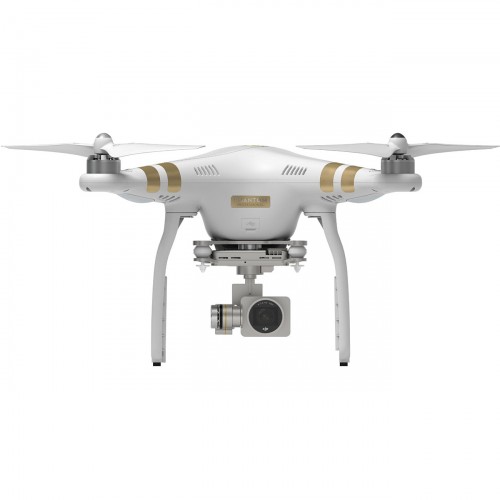You know you’re finally living in the future when headlines like Drone crash interrupts US Open tennis match, Japan Accepts American Challenge to a Giant Robot Duel, and Completely paralyzed man steps out in robotic exoskeleton, become the norm. What better way is there to celebrate another awesome year in tech innovations, than with a roundup of cool gadgets that hit the market in 2015?
Apple Watch
The much anticipated Apple Watch hit digital shelves on April 10, 2015, selling close to a million units on its first day. Shipping over 4.2 million devices by the end of the second quarter of 2015, it quickly, the Apple Watch quickly became the best-selling wearable device of the year. While the user interface has a learning curve, its sleek design makes learning it a joy rather than a chore. The ability to sync with your iPhone, track fitness metrics like your heart rate, view text messages and notifications on your wrist, and play with a growing ecosystem of apps are all compelling reasons for Apple fanatics to dive into the world of wearable tech. The only real cons are the price tag, it’s 1 day battery life and the fact that you need to pair it with an iPhone in order for it to work. Still with its stylish exterior and a variety of materials and bands to choose from, the Apple Watch is as much a fashion statement as it is an awesome piece of tech.
DJI Phantom 3
The DJI Phantom 3 hit shelves in April 2015, combining the user friendliness of the DJI Phantom 2 with some of the more advanced tech of the pricier DJI Inspire 1. Among the features inherited from the Inspire, the Phantom 3 boasts a 4K camera, an indoor optic flow sensor for indoor lighting, and the DJI Lightbridge system which allows you stream 720p video in real time from your drone to your mobile device. Packing all that tech into a much more affordable body means powerful drones are now more accessible than ever before. Expect to see the headlines filled with wackier drone antics in the year 2016.
GoPro Hero4 Session
Hitting the market just in time for summer, the GoPro HERO4 Session was released on July 12, 2015. 50% smaller and 40% lighter than its predecessor, the Session packs 1080p video and 8MP photo into a 1.5 inch cube. The new design is rugged and waterproof up to 33’ (10m) right out of the box, and does not require an external housing like previous versions. The lack of a housing means, audio has been greatly improved for filming underwater, as the external shell had the tendency to muffle sounds. The low profile form factor also means there are now more ways to mount your GoPro than ever before, opening new and exciting avenues in action cinematography.
Windows 10
If you own a PC running Windows 7 and above, you’ve probably already noticed your computer’s constant requests to upgrade to Windows 10 for free. Released on July 29, 2015, Windows 10 marks the biggest change to Microsoft’s modus operandi in years—switching from a desktop PC centric platform to one that embraces the world of cloud computing and mobile devices. Microsoft has made it clear that it intends for Windows 10 to be the future of its entire platform, and has added a number of exciting new features to help carry the company into 2016 and beyond. Chief among these new features are a personal virtual assistant Cortana, the successor to Internet Explorer, Microsoft Edge, and Continuum an exciting new feature that allows you to hook your smartphone to a smart TV, keyboard and mouse effectively transforming it into a Desktop PC. Software designed for Windows 10 will be optimized for the ability to work across a variety of devices and screen sizes. So instead of getting a watered down version of an App on your phone, you have access to the entire program that reshapes its user interface to match your device.
Microsoft’s HoloLens
Just when Google was about to give up on Google Glass, Microsoft unveiled the HoloLens at its press conference for Windows 10: The Next Chapter on January 21, 2015. While Augmented Reality (AR) has been around for years, Microsoft’s demo of the HoloLens really put into context how overlaying digital data over the real world can have a huge impact on industries ranging from engineering and design to entertainment. The ability to play with Minecraft blocks in your living room, overlay engineering designs over your workbench or gain quick access to notifications from your smartphone within your field of view showed once again how AR is poised to change the world of UI/UX design in the near future. The first developer version of the HoloLens will be available in the 1st quarter of 2016, allowing you to catch a glimpse of the future for just $3,000.
BUDDY: Your Family’s Companion Robot
The field of robotics has finally reached that point of the exponential growth curve where leaps and bounds can be noticed by the masses—meet Buddy, the world’s first crowdfunded, emotional robot companion. Buddy sports a smart touch screen with a face and aims to be more useful than your smartphone. Something of a cross between R2D2 and Wall-E, Buddy can charge all your devices, communicate with your home’s devices over Bluetooth and Wi-Fi, sync with your calendar and remind you of appointments and meetings, tutor your kids with videos and interactive lessons—the possibilities are endless. Since developer Blue Frog Robotics was able to exceed its Indiegogo goal of $100,000 by 6 times, expect to see some exciting new developments in the year 2016. If you ever wanted to have a companion robot like R2D2 from Star Wars or Rosie from The Jetsons, Buddy just may be the droid you’re looking for.


Leave a Reply